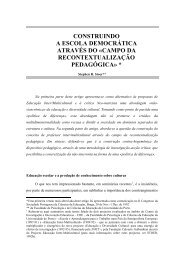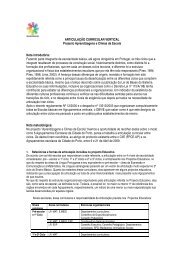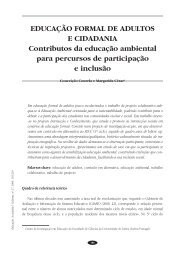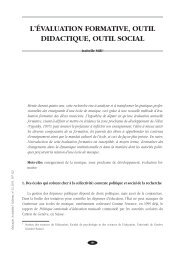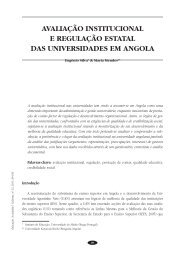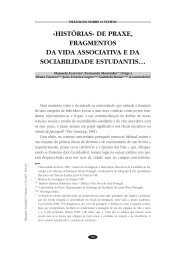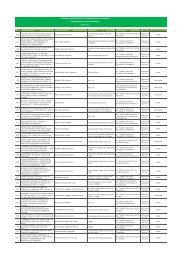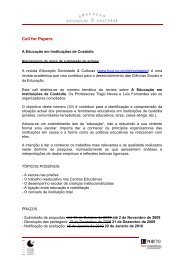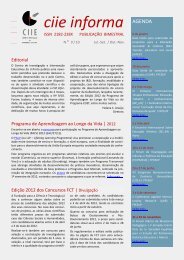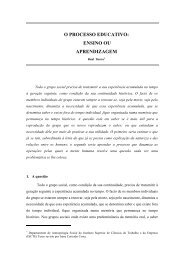REFLECTINGON AN ACADEMIC PRACTICE TOBOOST GENDER ...
REFLECTINGON AN ACADEMIC PRACTICE TOBOOST GENDER ...
REFLECTINGON AN ACADEMIC PRACTICE TOBOOST GENDER ...
You also want an ePaper? Increase the reach of your titles
YUMPU automatically turns print PDFs into web optimized ePapers that Google loves.
Some of the varied responses we have had in discussions about feminists or feminism are: «they hate men andpromote reverse discrimination», «they did well in the past and we no longer encounter those problems», «feminismdoes not relate to my culture», and «feminism still has a role to play, but using the term will only hinderour cause due to backlash». (2009: 20)Reading feminist articles and participating in the class make them more open to feminisms.Step 4(OP) Little groups of classmates that had analysed dilemmas with the same protagonist(Mary or Paul) were invited to put their analyses in common and to create collective categories.We shared the results of the groups’ analysis in the class trying to evidence gender differencesthat students had reproduced in their dilemmas (many of them still didn’t know that there weretwo different protagonists). That analysis, coordinated by the teacher with the support of theco-researcher, detected that different gender stereotypes were reproduced in the dilemmas.(TC) That practice was realized a week after the one explained in step 2, and we dedicatea couple of hours to it. We realized that practice just after a theory class, when we introducestudents to feminist debates. In that step, an external researcher (A. Velasco) was invited toparticipate and collaborate in the debate.(R) The high level of participation in the debate was mostly characterized by a reaction ofdeny (Titus, 2000) of the results of their own analysis with the pretext that results were influencedby their lack of expertise in creating categories. Despite of the evidence of gender difference,many students suggested they were sure they would had written exactly the samedilemma for the other gender protagonist and they didn’t want to enter in considering thepossibility that even the same dilemma could have been told differently.(C) We understand that we need to present more detailed evidence in order to try toengage students with their own personal reproduction of gender stereotypes, trying to transformtheir resistance as a basis for – instead of a barrier for – gender learning as suggested byTitus (ibidem).Step 5(OP) In order to provide a more detailed analysis and to show more clearly to studentsthe characteristics of the accounts they have created, we decided that the external researcherwill re-analyse the dilemmas, with the support of the software Atlas.ti.119



